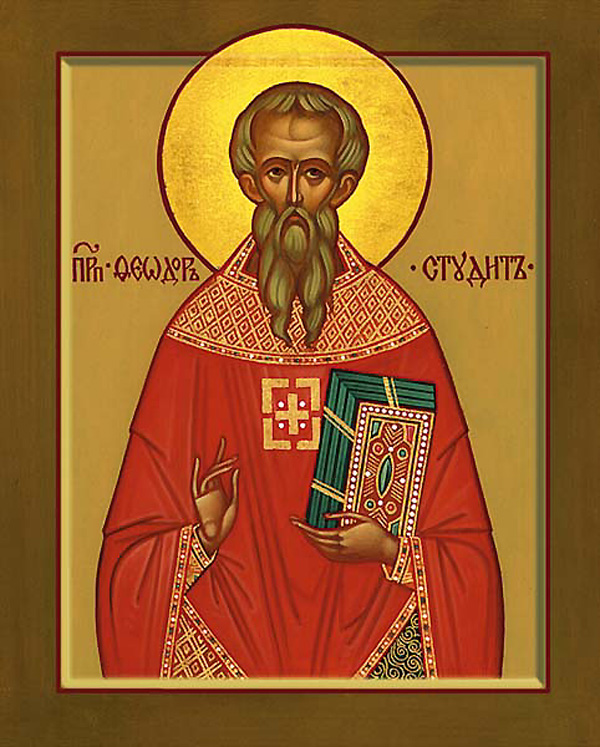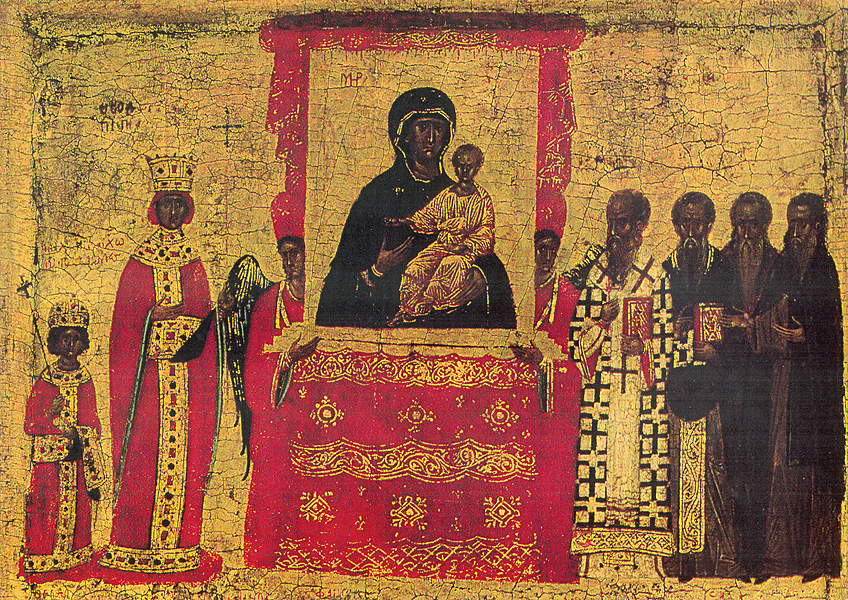The End of Iconoclasm
In 811, the Byzantine army, led by Emperor Nikephoros I (r. 802–811), was ambushed in Bulgaria, and the Emperor was killed in the devastating defeat. Not since Emperor Valens died at the hands of the Goths at Adrianople in 378 had a Byzantine emperor been killed in battle.
Two years later, a new line of imperial rulers emerged who once again attacked both the veneration and the venerators of the holy images. Again the icons were blamed for the various troubles of the Empire, especially the setbacks in warfare with the Bulgarians.

In 815, Emperor Leo V the Armenian (r. 813–820) ordered the icons in the churches to be placed above the reach of the faithful so that they could not be honored and kissed. Everyone in the Church knew that a second wave of persecution against the icons and their venerators was starting. In defiance of the order, on Palm Sunday in 815, Saint Theodore the Studite (759–826), the abbot of the great Studion Monastery in Constantinople, led a public procession with the holy icons. For this he was sent into exile. He would be the main theological champion of the icons during the second wave of Iconoclasm, through his important work entitled On the Holy Icons.
Persecution of the Iconodules was as fierce at times during the next twenty-seven years as it had been in the previous century. Not until 842 was the persecution brought to an end. And just as it was a woman—Empress Irene—who ended the first wave of Iconoclasm after coming to the throne upon the death of her husband, Emperor Leo IV the Khazar (r. 775–780), as regent for their son who was too young to rule, so again it is a woman—Empress Saint Theodora—who brings the second wave of persecution against the icons to an end when she comes to the throne upon the death of her husband, Emperor Theophilus (r. 829–842), to rule as regent for their young son Michael III.

Empress Theodora worked quickly to restore the icons. In March of 843, John the Grammarian, Iconoclastic Patriarch of Constantinople and advisor to Emperor Theophilus, was deposed and replaced with Methodius, who had spent seven years in prison for his defense of the icons. And immediately, at a local council in Constantinople, the icons were restored, and a huge, triumphant procession with the holy images took place on the first Sunday of Great Lent in that year—March 11, 843. This great event, known as the Triumph of Orthodoxy, has been celebrated ever since in the Orthodox Church on the first Sunday of Great Lent—known as the Sunday of Orthodoxy.
Hymns from Vespers for the Sunday of Orthodoxy
Thou who art uncircumscribed, O Master, in Thy divine nature, wast pleased in the last times to take flesh and be circumscribed; and in assuming flesh, Thou hast also taken on Thyself all its distinctive properties. Therefore we depict the likeness of Thine outward form, venerating it with an honor that is relative. So we are exalted to the love of Thee, and following the holy traditions handed down by the Apostles, from Thine icon we receive the grace of healing.
As a precious adornment the Church of Christ has received the venerable and holy icons of the Savior Christ, of God’s Mother and of all the saints. Celebrating now their triumphant restoration, she is made bright with grace and splendor. . . .
The grace of truth has shone forth upon us; the mysteries darkly prefigured in the times of old have now been openly fulfilled. For behold, the Church is clothed in a beauty that surpasses all things earthly, through the icon of the incarnate Christ that was foreshadowed by the ark of testimony [Ex 25.22]. This is the safeguard of the Orthodox Faith; for if we hold fast to the icon of the Savior whom we worship, we shall not go astray. . . .
